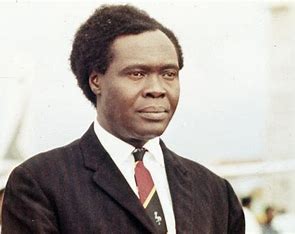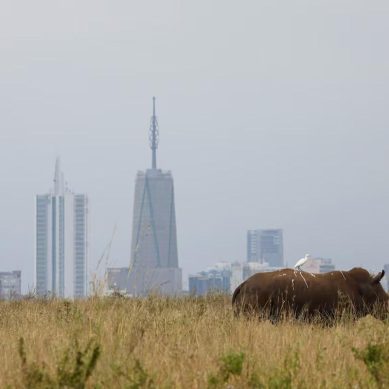
We are more than the most brilliant robots. We are conscious beings. But we are not the only conscious beings. Every living being with a functional brain is or should be conscious of its environment, in which it lives and eventually dies.
When a human being dies it is disposed of. There are many ways of disposing of a human and how it is done is determined by culture and traditional cultural practices. Wherever on Earth we live we are conscious that we are living things that are born, grow, manifest in terms of living and then die. It is a life-death loop that no one can escape. But in many cases it comes as a surprise yet it is a natural phenomenon that we all see and experience to ourselves and others.
In this article I want discourse on the different ways in which people of different cultures dispose of their dead and “with a view to proposing that we need to change our mindsets and burial processes and adopt more environmentally-conscious (eco-friendly) ones if we are to maintain and sustain our environment in modern times and contain climate change”.
We, and other biological beings, belong to what is called the Life-Death Cycle, a continuous loop in which the life component feeds into the death component through flow of energy and cycling of materials. Ecologically speaking, everything we took while living is expected to go back to the soil, where, according to the Bible Man, Homo sapiens, come from by an Act of God.
So the continuous loop is a loop of life, death and rebirth, and it is “the heart of all life”, from which we can never escape, whether in living or dead form. It is a natural balancing phenomenon that sustains life by maintains a beneficial relationship between the living and the dead. The living get all the energy that powers life and all the materials of which they are made from dying to release energy and materials. Therefore, to live we need death, not only us but also other living things.
The dead must decay to release energy and materials, which are then released for the living. The decaying is achieved through a group of living things called microorganisms (that is bacteria and fungi), which feed on the dead. If they did not intervene, dead material would not decay and would go on accumulating everywhere and into space, thereby making life unliveable for the living. Besides, there would be a terrible stench everywhere, and oxygen – the air of life – would be increasingly small amounts, because vegetation, which are the primary producers of the gas would be constrained to do that essential act. In one sentence, there would be no life.
Unfortunately, we are doing everything to disorganise the life-death cycle either by accelerating death or decelerating death, or by interfering with the work of the microorganisms.
We may accelerate death of humans by denying them factors of life or quality health in favour of things that do not add value to life. We may accelerate death by subjecting human life to wars that decimate bodies, destroy the living space, cause mass population displacement and convert people either into internal or cross-border refugees, which may precipitate clash of cultures and civilisations or hatred and physical clashes leading to death or eliminations through ethnic cleansing.
Our concern is how we get rid of our dead through culturally specified funerals. Some funerals are environmentally-conscious or eco-friendly and add value to the life-death cycle. Increasingly, due to environmental ignorance, environmental bankruptcy and environmental corruption driven by greed and selfishness, funerals have become polluted by the sterile culture of money, are done to accrue monetary gains to those organise them and just enhance environmental destruction, thereby adding no value to the life -death cycle. They are environmentally-unconscious or ecologically unfriendly.
Whatever the funeral type and wherever it takes place, it includes a ritual through which the dead is finally disposed of. There are always a lot of cultural and religious connotations, but if someone dies when he or she has been big, and the state gets involved and even claims ownership of the body and it is disposal, cultural and religious requirements and practices in the ritual are diverted and corrupted, often involving unashamed appropriation of taxpayers money just for the state to demonstrate that it has lost someone of importance, and by extension even try to use the death as an opportunity to enhance its legitimacy.
Otherwise normally, where cultural, traditional and religious values are pursued in the disposition of the body, the body may be destroyed either by cremation or in sky burials, or it may be preserved as in mummification or interment.
In Tibet, for example, bodies are cut into pieces and left for the predator bird of the air to clear them off. On the other hand in India or wherever Indians exist, even in Uganda, dead bodies are burnt to ashes and the ashes are spread on the water of lakes or rivers. Nothing is wasted. All these funeral practices are eco-friendly and adds value to the life-death cycle. They are life-sustaining.
In Uganda, the indigenous Basoga of long ago, say 350 years never buried the dead as such. They would put the dead, not far from their domiciles, at the base of the Ficus tree. Water streaming down the stem of the tree would wash the nutrients of the decomposing body down into the soul and the tree would suck them up through its roots and make use them to make food. The birds of prey like cultures and kites, would eat up the flesh. Wild dogs, jackals and foxes would eat up the bones, leaving only the skull, which was difficult to crash because of its shape.
On the other hand, nomadic pastoralists, who were more attached to the cow and grass than to people or themselves, would simply abandon the dead body to the birds of prey, wild dogs, jackals and foxes. All this treatment of the dead was eco-friendly and added value to the life-death cycle.
Modern funeral practices today rely on what the family of the dead or the dead wanted, when he or she was alive, to happen to his or her body. However, depending on the social status or official status in government, the state may overlook and do its own things oblivious to the wishes of family and the dead.
While former President Milton Obote was buried in his ancestral home in Lang’o, he was nonetheless buried in a coffin and his body was impregnated with chemicals to arrest bacterial action of breaking it down into materials and energy that could be used by the living. The grave itself was concretised with tiles so that roots of any nearby trees could not tap into the body. This is the popular, increasingly expensive and environmentally destructive way Ugandans are burying their dead and then pray to God to send them rain and free them from the negative impacts of climate change.
Burials have become more expensive than the health of the living. For example, when we lost the incorruptible former Speaker of Parliament Jacob Oulanyah, overzealous government official estimated that the taxpayers would have to part with Ush2.5 billion to accomplish the funeral process to the full, but following public concern, they reduced the cost to Ush1.2 billion – still too expensive for the poor country. We shall never know how exactly the fallen speaker would have wanted to be buried, but his funeral has emerged to be the most expensive in the country’s history. We can only imagine how expensive the coffin was, because of the corruption of his funeral, but it could be either wooden or plastic.
We don’t know how much the burial of Ignatius Musaazi, the originator of Uganda National Congress, and former President Yusuf Lule, whose final resting places are at Kololo airstrip, cost. Evidently, the cost of Oulanyah’s burial exceeds that of the burials of Obote, Ignatius Musaazi or Yufu Lule, as if the aim was to devalue those great sons of Ugañda and their struggles for independence. Or is it to devalue independence all together? Debatable.
But we can guess whose funeral will exceed that of Oulanyah in expense when death strikes, since the decision-makers are the same with like mindsets, with more attracted to interest politics than identity politics and to spending more on non-living things than on living humans
Kenya’s former attorney general Charles Njonjo who died recently at the age of 105 decreed the state should never ever be involved with his body or burial; that only his family should. He did not like the flair and expense that would be involve, arguing people would just come to eat and make money out of his death. He did not want his body to spend more than six days in the mortuary. Instead he preferred cremation (i.e, being burnt to ashes). I never followed to find out how expensive his coffin as, but since cremation involves burning the body under intense heat in a coffin, also the coffin is completely burnt to ashes.
Therefore, there is no way he would have wanted an expensive coffin. His funeral choices saved the taxpayers a lot of money, and saved the Kenyan environment further destruction. I never came to know where his ashes, together with those of his coffin, were finally laid. Some friends in Kenya will tell me. What I want to stress here is the Njonjo’s choices regarding his death were socially responsible and environmentally-conscious or eco-friendly. Indeed before he died he revealed that his choices were guided by those of Prof Wangari Maathai, which were also environmentally-conscious or eco-friendly.
Prof Wangari Maathai, whom I had a chance to meet at Chiromo Campus of Nairobi University when she was a lecturer there, and I was a post-graduate student of Conservation Biology in the very early 1980s, and did meet again at a very important environmental meeting in Denmark in 2009 or 2010 (I don’t remember the year).
- A Tell report / By Prof Oweyegha-Afunaduula. Prof Oweyegha-Afunaduula is a retired professor in the Department of Environmental Sciences of the Makerere University, Uganda











